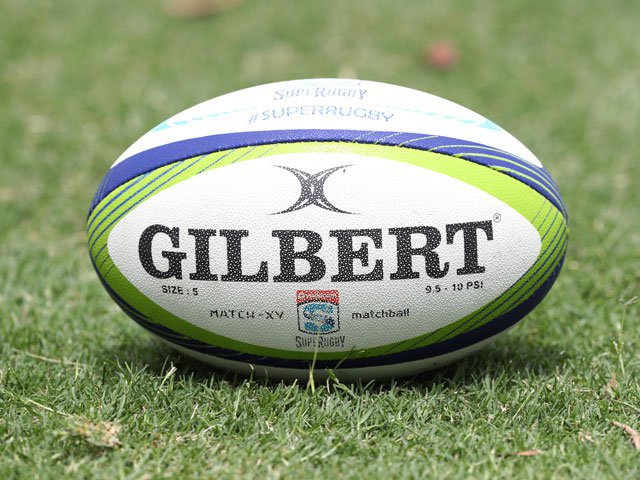Rugby law changes in a nutshell
Updated | By Jacasport
Five changes to the Laws of Rugby will come into effect when the season kicks off in South Africa, following approval by the World Rugby Council late last year.

The main aim of these
amendments is to increase ball in play time, to discourage negative play and to
improve player welfare. Apart from the law trials, a more stringent application
of the tackle law (relating to high tackle) will also come into effect in the
Southern Hemisphere.
A new law ruling and clarification regarding the rolling ball was introduced to simplify the law and make it easier to understand. In brief, a player standing with his foot in-goal, who gathers a rolling ball which is still in the field of play and then grounds the ball in the in-goal area, is now deemed to have carried the ball over. In the past a 22m drop was awarded, but according to the new law ruling, the referee will now award a scrum to the attacking team.
The experimental laws will affect the following areas of play: uncontested scrums, time, advantage, penalty tries, touch and the lineout. Below is a simplified, brief summary of each of the approved Global Law Trials, with a reasoning after the new trial law for easy interpretation.
Law 3: Number of Players – The Team
Uncontested scrums as a result of a sending off, temporary suspension or injury must be played with eight players per side.
Reasoning: To discourage teams from deliberate infringements and going to uncontested scrums.
Law 5.7 (e): Time (applied in Vodacom Super Rugby in 2016, now on trial globally)
If a penalty is kicked into touch after time has elapsed without touching another player, the referee allows the throw-in to be taken and play continues until the next time the ball becomes dead.
Reasoning: To discourage teams from infringing in the dying moments of the game.
Law 8.1 (a): Advantage
When there are multiple penalty infringements by the same team, the referee may allow the captain of the non-offending team to choose the most advantageous of the penalty marks.
Reasoning: To discourage repeat offending when advantage is already being played and to reward teams against whom repeat offending has taken place.
Law 9 (a.1): Method of Scoring
If a player would probably has scored a try but for foul play by an opponent, a penalty try is awarded. No conversion is attempted and value of the try is seven points.
Reasoning: To discourage teams from illegally preventing a probable try from being scored while also saving time on the clock by negating the need for a conversion.
Law 19: Touch and Lineout
• A player who is attempting to bring the ball under control is deemed to be in possession of the ball.
Reasoning: This brings into law something that is already applied in practice. It means that a player "juggling” the ball does not have to be in contact with it at the exact moment of touching the touchline or the ground beyond it for the ball to be deemed to be in touch. This makes it easier for the match officials to adjudicate. Please see footnote.
• If a player jumps and knocks the ball back into the playing area (or if that player catches the ball and throws it back into the playing area) before landing in touch or touch-in-goal, play continues regardless of whether the ball reaches the plane of touch.
Reasoning: To simplify law and to increase ball-in-play time.
• If the ball-carrier reaches the plane of touch but returns the ball to the playing area without first landing in touch, play continues.
Reasoning: To simplify law and to increase ball-in-play time.
• In this case, if the ball has passed the plane of touch when it is caught, then the catcher is not deemed to have taken the ball into touch. If the ball has not passed the plane of touch when it is caught or picked up, then the catcher is deemed to have taken the ball into touch, regardless of whether the ball was in motion or stationary.
Reasoning: To simplify law and to increase ball-in-play time.
Illegal (high) tackle
World Rugby recently redefined illegal (high) tackle categories and increased sanctions to deter high tackles via a law application guideline, with the new law applying from the beginning of January. As a result, the two new categories of dangerous tackles will carry penalty offences to deter and eradicate high tackles:
Reckless tackle
A player is deemed to have made reckless contact during a tackle or attempted tackle or during other phases of the game if in making contact, the player knew or should have known that there was a risk of making contact with the head of an opponent, but did so anyway.
This sanction applies even if the tackle starts below the line of the shoulders. This type of contact also applies to grabbing and rolling or twisting around the head/neck area even if the contact starts below the line of the shoulders.
The minimum sanction for this offence is a yellow card while a red will be shown for a maximum transgression.
Accidental tackle
When making contact with another player during a tackle or attempted tackle or during other phases of the game, if a player makes accidental contact with an opponent's head, either directly or where the contact starts below the line of the shoulders, the player may still be sanctioned.
This includes situations where the ball-carrier slips into the tackle. In this instance, the minimum sanction is a penalty.
Show's Stories
-
Visit Joburg's premier indoor adventure park, Rush
Thinking of something to do that gets you feeling warm and energetic? He...
The Workzone with Elana Afrika-Bredenkamp 3 hours ago -
The best traffic cop in Gqeberha gets a thumbs up again
Who knew that traffic cops could put smiles on motorists' faces...
The Workzone with Alex Jay 4 hours ago